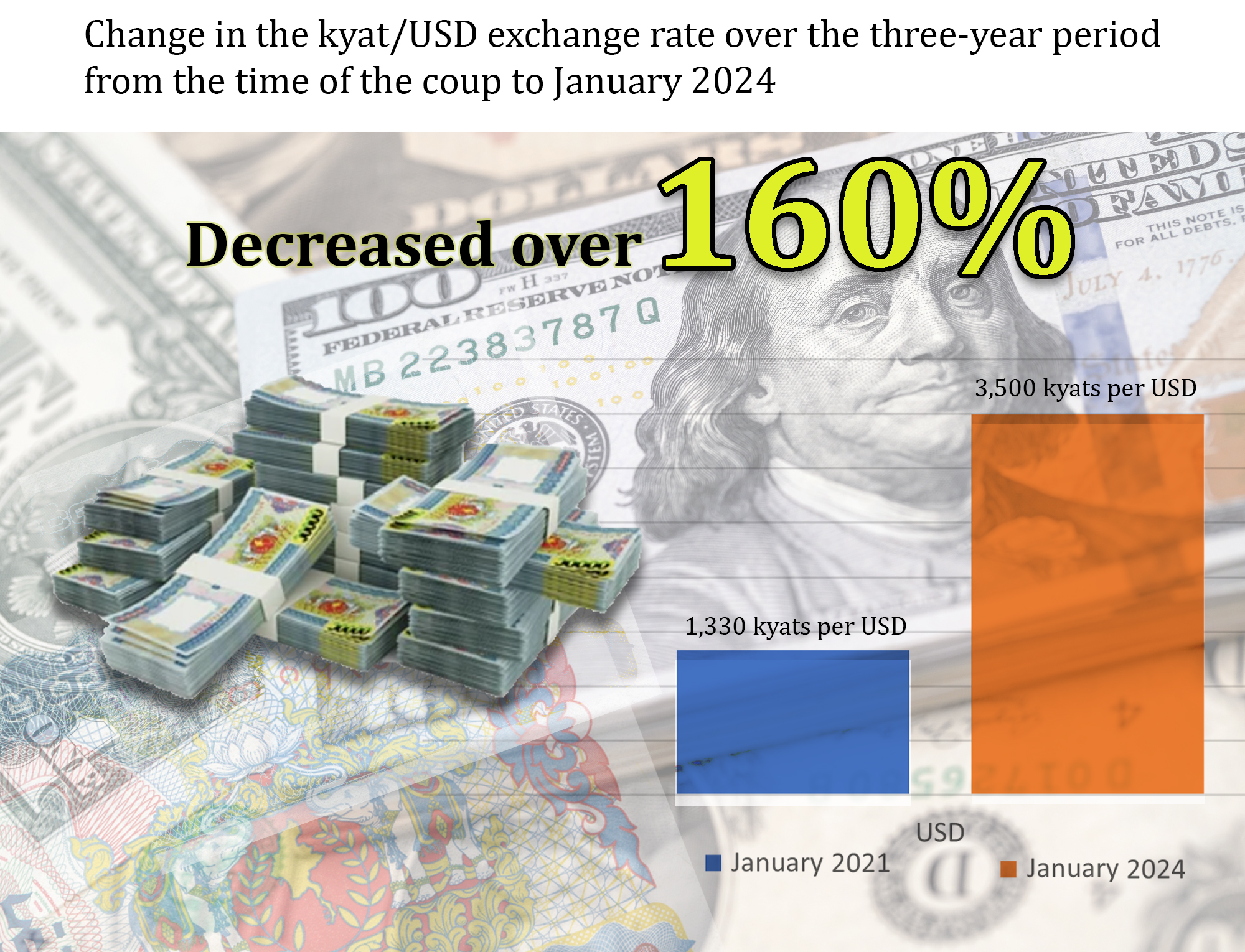Myanmar people have suffered soaring prices for almost all commodities in the three-year period since the February 2021 coup. Rice and edible oil are among their most basic needs and the most important commodities found in every kitchen in Myanmar.
The price of premium quality rice was around US$16.50 per sack in January 2021. But by January 2024 it had jumped to $44.20—an increase of over 160 percent within three years. The price of low-quality rice in January 2021 was just $8.40 per sack, approximately. But the figure had more than tripled by January 2024 to $27 per sack—an increase of over 220 percent.

The price of edible palm oil has also dramatically increased over the three years, and consumers have faced frequent shortages of the staple. Of those who were previously able to afford peanut oil, most now no longer can, or must mix it with other types.
The price of edible palm oil was $1.20 per viss (1.6 kg) in January 2021, but had almost doubled by January 2024 to $2.10. The bigger problem people face is frequent shortages, forcing them to queue in markets, where it is rationed.
Myanmar people are also suffering due to the high prices and scarcity of fuel. The hardest time was experienced in December 2023 when importers couldn’t pay in dollars, causing delays unloading fuel tankers in major cities. The regime was no longer able to sell to importers the US dollars they need to purchase fuel.
Over the three-year period, the Myanmar people have seen huge increases in the prices of both gasoline and diesel and suffered greatly because of it. The price of Octane 95 gasoline was $0.20 per liter in January 2021. But the price jumped to $1.25 by January 2024, an increase of over 520 percent.
The gold price has also risen, as citizens have bought the precious metal amid a slump in the value of Myanmar’s currency, the kyat, since the military coup in February 2021. In January 2021, the gold price was just slightly over 1.3 million kyats or $377 per tical (16.3 g). But by January 2024 it had risen to $1,105, an increase of over 190 percent.
The kyat has depreciated by over 160 percent since January 2021. At that time, the kyat/USD exchange rate was only 1,330 per USD but in January 2024 it stood at 3,500 kyats/USD. (At the time of publication of this story, the exchange rate stands at around 3,500 kyats/USD).
Trade volume and foreign investment have also declined over the three-year period. A comparison of fiscal year 2019-20, under the civilian government, and FY2022-23—the first full fiscal year under the military junta—shows that foreign investment decreased by over 190 percent under the latter. Comparing the same two periods also shows an 8 percent decrease in trade volume.
Myanmar’s GDP growth has also failed to recover, with the growth rate of 6.60 recorded back in FY2019-20 remaining higher than anything seen in the past three years.























